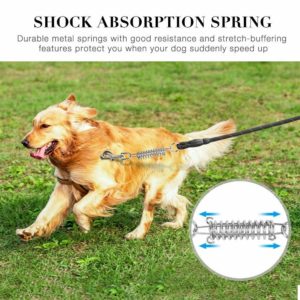
Sometimes it seems as if I’ve spent my whole life in a crusade to get people to stop using choke chains as an everyday collar for their dogs. And sometimes it seems a futile effort, since not a day goes by that I don’t see a dog with a choke chain for a collar, the license hanging from the ring as proof that the animal wears the deadly chain all the time.
In the past I’ve argued that the choke-chain collar is only for walking and training your dog, and you put your dog at grave risk if you leave a chain collar on an unsupervised dog. That’s because the ring of the chain has been known to get caught, even on the tooth of another dog in play. When a dog is snagged, his natural instinct is to pull away, and that causes the collar to tighten. The more panicked he gets, the more he pulls, the more the collar tightens. The end result, you can well imagine.
Your dog should wear a collar and tags for his own safety. And for safety, that should be a collar with a buckle or snap holding it together — not, not, NOT a choke chain.
OK, so that’s what I’ve always said. Today I’m going to say something more on the subject of choke-chain collars. When you take the chain off your dog — as soon as possible, please — don’t put it aside for training or for walks.
The choke-chain collar is an effective training tool when used correctly. And it’s not cruel when used correctly. The problem is, the choke-chain collar is rarely used correctly. In a lifetime of sharing my life with dogs, training dogs and writing about dogs, I can count on one hand the number of times I’ve seen the average dog lover using a choke chain correctly — and I’d still have two or three fingers left over for counting.
There are only two ways to put on a choke-chain collar: with the moving end over the dog’s neck (right), or under the dog’s neck (wrong). By the simplest law of averages you’d think folks would get them on right half the time, but all I ever see is the wrong way. When the moving part of the chain comes from under the dog’s neck, the chain doesn’t release easily when the leash is slackened. Since the collar’s usefulness as a training tool relies on a quick snap-and-release action, a collar that’s put on wrong is useless at best, and cruel at worst.
But even if the collar’s put on right, people still manage to use it wrong. The collar is meant to be loose at all times except for the occasional split-second tightening to correct a dog’s behavior. And yet most collars are tight all the time, as gasping dogs in coke chains drag their owners down the street.
I realize it may be hard to give up the choke chain. It’s an ingrained part of our consciousness, one of the things we buy automatically for our dogs — food bowls, a leash, a choke chain. Many pet lovers may not even know an alternative exists. But it’s out there.
Primary among them, especially for people who have trouble walking their dogs, would be a head halter such as the Gentle Leader. Take the basic idea of a horse halter (where the head goes the body will follow), and add a couple of features just for dogs. Head halters are not muzzles. They work through pressure to the back of the neck and top of the muzzle, spots used by canine mothers to transmit the message of “I’m the boss” to their pups.
If you can’t walk your dog without choking him and running the risk of dislocating your own shoulder, it’s time for a change. Throw out the chain, and the danger and confusion that comes with it, and go for the alternative that’s both safer and more effective. Get ahead halter for your pet. Your dog and your shoulder will both be grateful.
Tags:

Thank you for the wonderful post
This is truly helpful, thanks.
It works quite well for me
This is actually helpful, thanks.
Thanks, it is quite informative
I like the article